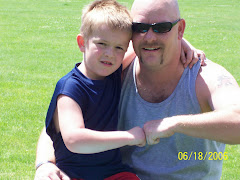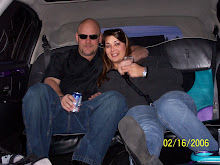Day two started as you can imagine with a pretty severe hangover, but being the veteran that I am, I mustered the energy to load the assembly DVD that came with my parts. The video was created by a company called 2Wheel Films, and depicts a guy building a 2005 pro street chopper. So as I watch the first chapter, this explains how to mount the swingarm to the frame.
Not wanting to get to far ahead of myself I decide to go down and follow the instructions. To my amazement the swing arm had 2 bearings sliding around the swing arm shaft. Now this seemed very strange since mister assembly on the DVD did not have these? With some investigation I find that these bearings need to be pressed into the swing arm. Hmmmm……now this poses a bit of a problem right off the bat since neither me nor anyone I know owns or has access to a bearing press.
Being the resourceful person that I am, I try several methods to get the bearings seated, including a few creative methods that included large sockets and a sledge hammer. After several attempts I could not get the bearing to start straight, and decided I should cut my losses and let someone with the right equipment tackle this job.
The first place I called was a local tire store, and Kyle assured me they could do it. With swing arm in hand and the dog (Boss) loaded into the truck I headed off to see Kyle. I should have suspected a problem when Kyle got the manager and the both were doing a lot of head scratching, and saying “hmmmmm”. Manager Tom said “We will probably have better luck if we hear the swing arm and drop the bearing in. GENIUS!! Why didn’t I think of that? Maybe it was the Tequila? Tom says about an hour and between $50 and $100. Given the alternative (sockets and hammers) I agree and head off to get a sandwich.
Fifteen minutes later I get a call from Tom, I am thinking man that was fast! But to my surprise Tom had other news. He said that they had heated up the swing arm and the bearing dropped right in, but when they went to cool it, the plastic insert inside the bearing had melted and poured out of the bearing. I said I would be right there…….
The local bearing shop did not have what I needed so off to the Harley Dealer (HD) I go. Dave at the parts counter looks up a Harley swing arm bearing and warns me “these babies are spendy”. Just what you want to hear right? So he brings out the bearing and of course the inner diameter is larger that mine. So he looks up the only other swing arm bearing the HD uses and of course…. they are out of stock. So Dave explains they are $60 a piece and it will take 7 – 10 days to get them. This is not starting out so well.
My next stop is the HD service department to find out if the pro’s can do this job. The very slow moving service tech assures me they can do the job for about $125.00. Now there are several benefits here, primarily if the hose up the bearings they have access to more that I do not have to pay for.
Not a single part installed and I am already $250 bucks poorer. The hangover hurts more now then ever. The bearings are due to arrive at the HD dealer next Friday 4/18. More to come on this saga later.
After I got back home I decided to take a look at the next steps on the DVD. This was putting on the rear tire which requires the swing arm to be mounted, so I did the next best thing and used some large tie wraps to secure the swing arm in place. This will also make removal easy when I have to head back to HD. With the rear tire mounted on the rear axle I was able to move on to the next step.


By this time it is late afternoon and I have managed to tie wrap a swing arm and burn up a $60 bearing. Let’s hope Mr. Assembly (MA)
as I will call him has a bit easier task next?
I fire up ye ole DVD once again, and we are going to assemble the neck bearings and triple trees. I watch the chapter and with great hope head down to the assembly area. I unbox the chrome forks and they look just like the ones MA used. I get the remaining parts unboxed and then realize that on MA’s frame the neck cups and bearing races are already installed on his frame. Ok here we go again. I play with the parts like a kid with Rubics Cube for the first time. Twisting, turning and mimicking trying to fit together a 2500 piece puzzle. Finally I get the cups and races installed and feel a sense of completion.
Next are the triple trees and steering neck. No surprise here, MA’s triple trees install from the bottom up, and mine are the exact opposite (top down). No biggie, a little bit of common sense and they were on.
I try to slide the forks into the triple trees and determine that the large nut on the top that MA used to secure the fork to the triple tree does not fit into the top of my tree!! You must be kidding…….
After looking at the parts included with the triple trees I notice these two threaded chrome caps. I stuck those caps in every hole there was (insert your own bad joke here) before I realized that you had to remove the shock tube adapters and insert these flat top caps. Now if you have ever tried to hold a round object with one hand and an open end wrench in the other hand, you know that you are limited at best. I finally decided to clamp the fork in the triple tree about half way so I could get enough torque to loosen the adapters. This worked great, except for the spring shooting out the top of the fork at mach ten. Springs reloaded, caps installed and forks FINNALY in the trees.
Now I can move on to installing the front tire. This seems pretty straight forward, remove axle and spacers and install tire, axle, and spacers. With a little help from a small car jack I able to get the holes lined up and the axle started. The axle slides in almost all the way before I make the expert determination that the chrome plating is keeping us from inserting the axle all the way. So off to the wire wheel I go. A little effort and the chrome plating peels right off the axle end. She slides in like butter.
I begin to sit back and marvel at my work and open the first beer of the day. Not so tasty, but with every chug my head hurts less and less. I decide this is a good stopping place for the day, and start looking at some parts I can install the next day. It is during this process I notice the label on the front brake caliper that says “left hand brake caliper”. Oh crap!!!! I installed the wheel with the brake disc on the right side. I also noticed that I installed the shocks on the wrong sides. This is purely aesthetics, as the right shock has a small gap in the chrome to place a pry bar. This gap is visible if they are reversed. Looks like my work all has to come apart in the morning.
I am learning the DVD is a better beer coaster than training aid. Another day done and a few more lessons learned.









































